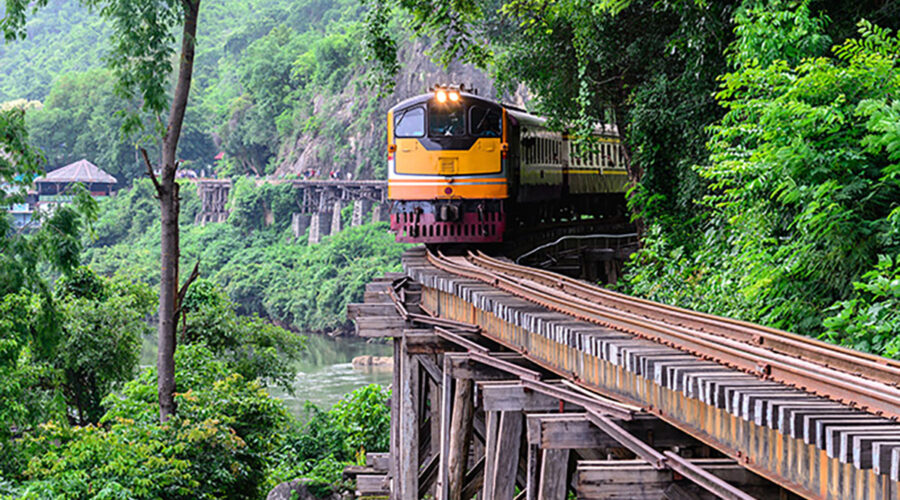Exploring Kanchanaburi – Thailand’s Wild West
Following the 2018 Australian Travel Writer’s AGM in Bangkok, travel editor Rhonda Bannister took a three-day trip to Thailand’s western provinces, exploring Kanchanaburi, returning via the estuarine province of Samut Songkhram, where she discovered where to live it up like the locals. Here’s an extract from her article published in Holidays for Couples.

The Mae Klong River starts its journey to the Gulf of Thailand from the confluence of the Khwae Noi and the Khwae Yai Rivers in the town of Kanchanaburi — the gateway to Thailand’s Wild West. This is an area of untamed wilderness, jungle-clad mountains and full-flowing rivers, and it’s an ideal base from which to explore the many surrounding attractions. The area has a dark past, though, famously explored in Pierre Boulle’s Le Pont de la Rivière Kwaï (1952) which was adapted into the 1957 David Lean epic, The Bridge on the River Kwai.
![]()
During WWII, Japanese forces used Allied prisoners of war to build a rail line from Thailand to Burma, cutting through dense jungle and along steep river cliffs. Some 16,000 POWs died in unspeakable cruelty while being forced to create a 400-kilometre railway track. The back-breaking work began in Kanchanaburi, so on arrival we do what all visitors come to do. We pay our respects at the Commonwealth War Cemetery, where the remains of nearly 7,000 British, Dutch and Australian soldiers lie in eternal rest, before walking across the infamous steel bridge.
We then catch the train which runs from Bangkok three times a day and continues along the Death Railway, squeezing through tight rock cuttings before reaching the Wampo Viaduct. It’s a heart-stopping experience, especially when combined with a visit to Hellfire Pass which we do the next morning (it’s hard to do it all in one day). But it’s a journey I think all Australian visitors to Thailand should take in order to understand the great privileges we enjoy, thanks to the sacrifices of these brave young men.
Kanchanaburi (two hours northwest of Bangkok) is an area worthy of a longer stay as there’s so much to see and do, plus plenty of accommodation — from backpacker to ‘flashpacker’. If the ebb and flow of a river appeals, look out for one of the floating hotels strung along the bank. Water-based activities here include bamboo rafting, fishing, kayaking and canoeing plus a water-adventure park on the river for the young and young-at-heart. Adventurers and animal-lovers will adore the scenic hiking trails, lush native forest and resident wildlife (including langur monkeys) of Erawan National Park. You could spend an entire day here trekking through the jungle and swimming under Erawan Falls. A seven-tier waterfall with a natural swimming pond at each level, it’s a truly spectacular sight to see.

If you’ve ever wanted to get up close with an elephant, you can (ethically) live the dream at Elephants World. This sanctuary for elderly elephants, whose years of labour and abuse are now behind them, is a welcome alternative to other animal ‘encounters’. We enjoy a fabulous afternoon cutting banana grass for their dinner before ‘helping’ these majestic and playful creatures bathe in the river. Although they really don’t need assistance, the elephants graciously indulge us as we brush off mud and splash them with water. Three words – do not miss.


